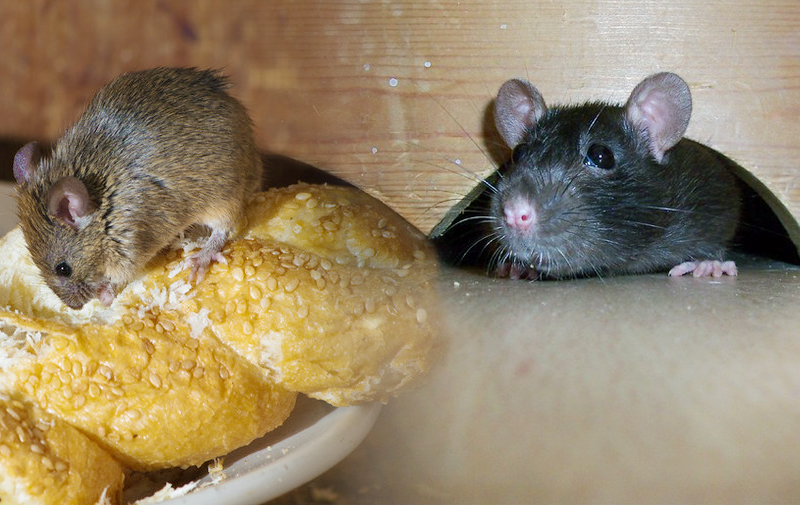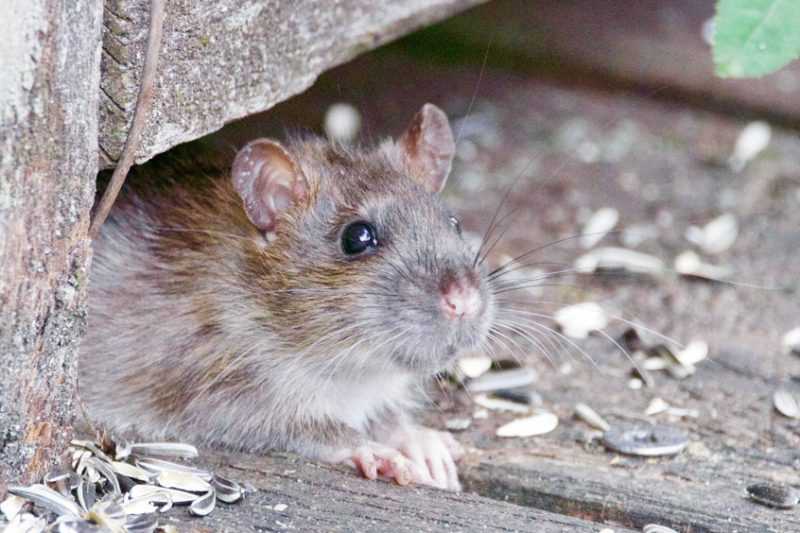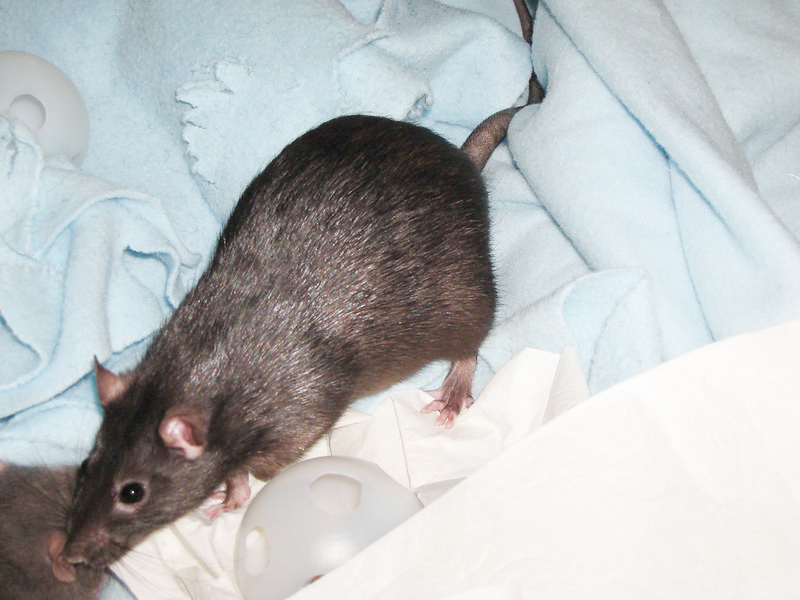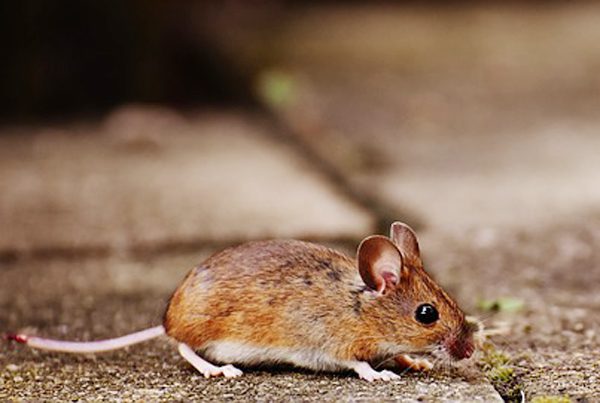Pests On The Move In The East Of Adelaide
September 27, 2022
October 3, 2021
Table of Contents
The sight of a rat or mouse in your home or office can be upsetting, to say the least. Bites, disease, chewed-up properties are just a few of your concerns. What are the various rat vs. mouse comparisons? How do you tell them apart and manage them? This article will answer these questions and consider their standard features, eating habits, signs, prevention, and management.

Generally, for your home, you may consider two types of rodents — the rat and mouse. More specifically, three species of rodents quickly adapt to the human environment. First, the Brown Rat (Rattus norvegicus) is also named Common or Norway rat. The Norway rat usually prefers living in homes and businesses. They are bigger in size than black rats.
Second, the Black Rat (Rattus rattus) is further known as the Ship or Roof rat. No surprise, ships may include the black rat as a pest-controlled item in their reports, as it is a common pest. Finally, the House Mouse (Mus domesticus) is common in many homes.
Whatever the species you are considering for rodent control, they all have standard features like short legs and long tails. Furthermore, they have a pair of incisor teeth in their upper jaw. Nonetheless, a closer look will tell the difference between mice and rats using identifiable features for each species.
You may be forgiven for mixing up the two. Aside from behaviour differences, rats and mice do look similar. However, people use their sizes to differentiate them. Rats tend to be bigger and heavier. This includes their tail length.
On the other hand, mice tend to have slender bodies. Furthermore, mouse tails are hairy, long, and thin, while rats have shorter, thicker, and hairless tails. Moreover, you can use the more significant amount of droppings present during the day to differentiate the mice from rats.
Indeed, with a body size of 3-10 cm long, house mice are smaller than the rat. After all, the body length of a rat is 16-40 cm. Furthermore, a mature mouse has more prominent ears and a longer tail in proportion to its body length. You can use the length of an adult mouse tail to differentiate it from a young rat tail.
In addition, rat heads and feet are proportionately more prominent than its body in comparison to the mouse. Distinctively, mice generally have a light grey or brown colour with a lighter shade in their bellies.

The brown rat has a thicker body, blunt nose, and small hairy ears. In addition, it has a tail that is shorter than the length of its head and body combined. Typically, it has a paler colour underneath its tail.

However, the black rat is characterised by its slender body, pointed nose, and large thin ears. In the same vein, its tail is longer than its head and body.

Typically, mice have a pointed, triangular snout. Likewise, they have larger ears and smaller heads. In addition, they can be black, grey, or light brown. As mentioned earlier, mice have long, thin, and hairy tails.
You can usually find brown rats in buildings and outdoors. They are active on the ground and in burrows. Furthermore, brown rats can cause severe damage to sewer systems. Characteristically, you can identify its travel routes using the continuous smudges caused by its oily fur.
In contrast, black rats can be found in buildings close to ports and ships in temperate countries. Little wonder they are called ‘ship rats’. Thus, these agile climbers build their nests high up under roofs. As such, you may find them in the upper levels of a home or office building.
Alternatively, mice typically live on the ground. They also nest in burrows. Keep in mind that it is also agile and can climb. However, the mouse has a smaller footprint than a rat.
Both rodents are omnivorous. A rat will eat anything. However, the various species have their preferences. For example, black rats like fruit and foods containing a high moisture content. On the other hand, the brown rat and house mouse prefer cereals.
They like cereals and drink up to 60ml water a day. Interestingly, brown rats cut their grain when eating. This gives the grain a chopped appearance. They are likely to seek their food in the same areas.
Similarly speaking, black rats are less likely to eat from the same area two nights in a row. This makes controlling them more difficult. They drink up to 30ml of water a day.
Though mice eat grains, fruits, and seeds, they prefer cereals. The mice will often piece out the grain. It removes the outer husk to eat the white endosperm inside. Moreover, it is likely to seek its food source in the same places. Do they drink water? No, they do not need to but, if water is available, they can drink up to 3ml.
Though you may often confuse their droppings, the droppings of the three rodents differ. These differences between rats and mice poop are in size and shape.
If the droppings have a tapered spindle shape that resembles a large grain of rice, it is usually that of a brown rat. In addition, the droppings are wide and of a dark brown colour.
The black rat’s droppings are smaller than those of the brown rat. Furthermore, they are long and thin. You can check for its banana-like shape and pointed ends.
However, mouse droppings have a granular shape and a black colour. With approximate lengths of 3-8 mm, they are often found near nesting areas. Furthermore, they are scattered randomly, especially during an infestation.
Rodents all have a similar lifespan of up to thirty months. However, mice get sexually mature earlier than rats. Similarly, they produce larger litters more frequently. However, all three rodents have newborns that are blind, hairless, and dependent on their mothers when they are born.
The house mouse can produce around 7-8 litters per year. Each litter size is between 4-16 newborns and the maturity period is 8-12 weeks.
Likewise, the brown rat produces 3-6 litters in a year. The litter size is 7-8 babies and the time to maturity is around 10-12 weeks.
However, the black rat can produce up to 3-6 litters per year. The time to maturity is 7-8 weeks.
The following are a few tell-tale signs.
You can use the following signs mentioned below to identify the presence of the Norway rat in your home.
The black rat also has a strong, musty odour as well as a urine stink. However, the droppings are dark, measuring 1/2″ with pointed ends.
You are likely to find gnawed wires in ceilings, walls, or upper floors. Similarly, bite marks will be present on wall corners, wall studs, floor joists, and wood structures.
For the house mouse, watch out for the usual urine odour and strong, musty smell. Secondly, there are likely to be gnawing marks on plastic, wood, wires, cardboard, and food containers.
Similarly, expect to find your books or paper towels shredded and used for their nests. Moreover, their dark droppings measure 1/4″ and have pointed ends.
Any rat vs. mouse comparison you do, you will have to factor in their adverse health effects. This emphasises the importance of preventing their access to your home.
For instance, they transfer several diseases to humans. These diseases include Plague, Leptospirosis, Salmonellosis, and Tularemia. Again, both rats and mice may trigger allergies and asthma in certain people.
Rats and mice spread diseases in the following ways.
When you consider the breeding rates of a mouse vs. rat, you would realise how easily an infestation can grow. For example, statistics show that a pair of breeding rats can produce up to 15,000 pups within one year!
Imagine how complicated it would be to control such a population of rats or mice.
You may not have just your cash literally eaten; rats and mice can incur other costs. You may have to repair walls and attic insulation that they chew through. Besides, chewed electrical wiring poses a fire risk.
The following are some steps to take to get rid of mice or rats in your home.
These signs can be found as gaps or holes in your home. Go ahead and examine the fireplace, around doors and windows, pipes, and vents. Also, check under cabinets and appliances, attics, basements, and crawlspaces. Remember to check your roof, gables, eaves, and floor drains.
Next, use caulk and steel wool to fill in small holes. Alternatively, use metal, cement, metal sheeting, or lath screen to fill in larger gaps.
Depending on your control plan, your traps must be specific to the mouse or rat. Such traps can be placed in the right areas inside the home and outbuildings.
Store your food in plastic or metal containers. Wash your dishes after use. Similarly, clean up spills immediately. Furthermore, ensure you make use of metal or plastic trash cans with tight lids. You should empty your trash frequently and regularly.
There are botanical repellants that are offensive to rodents. Some of them are made of herbal ingredients such as lavender oil and other plant extracts. Ultimately, they give off an awful smell that puts off mice and rats but not humans.
Such pest control companies can solve a wide variety of rodent problems. Begin by checking their pest library. Their repertoire of expertise can include termite protection, termite control, ant control, bird control, rodent control, moth control, and tick control. It could also include mosquito control, cockroach control, spider control, fly control, and bed bug control.
Furthermore, you may find they can help with termite treatments, flea treatments, and bedbug treatments, to name only a few. Moreover, they can help you manage carpenter ants and help with wasp removal, bed bug removal, or even possum removal.
Usually, they will first evaluate your home. After that, they will suggest appropriate up-to-date treatment options for your pest management problems. In addition, they can implement prevention plans.
The sight of rodents in your home should not terrify you, at least, not too much. First, understand various rat vs. mouse comparisons, for instance, how to tell them apart and manage them. After all, knowledge is power, or at least, the beginning of it. Clearly, the best option, especially if it is an infestation, is to invite a professional pest control company.
September 27, 2022
Pest are on the move in the Adelaide Eastern suburbs, here is some info on pest in Norwood, Magill, Fullarton…
Read MoreAugust 30, 2022
Pigeons nesting under solar panels? Pigeons nesting under solar panels can wreak havoc, pigeons and other birds seek shelter between…
Read MoreOctober 26, 2021
Have you heard any strange noises coming from the roof? Or noticed any rat dropping on the floor? This may…
Read MoreWe understand that dealing with pests can be stressful. That's why we offer a convenient and speedy service. You can book our services online or get expert advice and bookings at 139 007. We offer appointments from 6am - 6pm and promise a 15-minute call back if you enquire online. We also provide digital service reports with photo evidence and offer credit card payment options in all service vehicles.